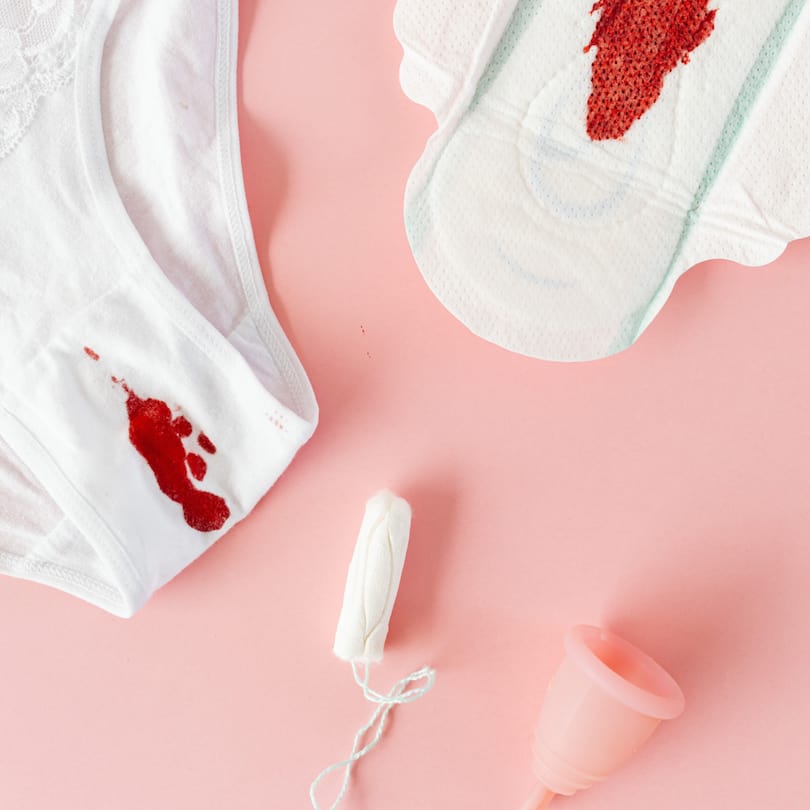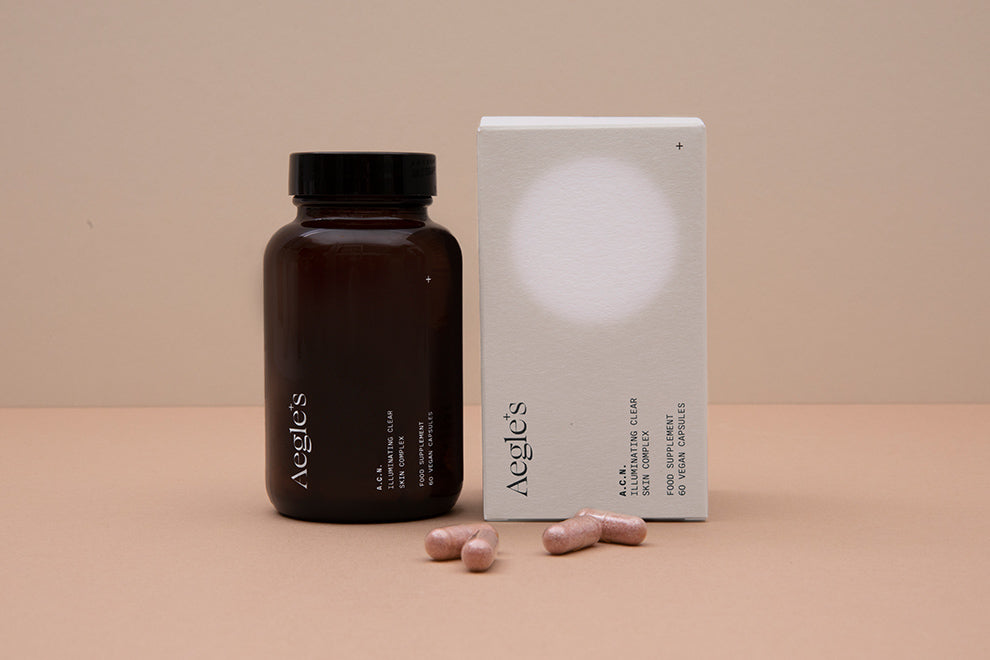

Most women are familiar with breakouts around their period. But why does this happen and how can these monthly breakouts can be prevented?
Acne, the menstrual cycle and the hormonal system
Almost all internal root causes of acne can be traced back to a hormonal imbalance.
It’s for this reason that acne and the menstrual cycle have such a tight relationship – as when a woman’s hormonal system shifts and changes throughout the month, any hormonal imbalance can manifest as acne.
Even though it’s more typical for a woman to experience acne in the days leading up to her period, some women experience their breakouts after day one of bleeding.
Let’s examine what’s happening in the body in each of these scenarios, and what can be done to rebalance the body and clear chronic breakouts.
Acne in the days leading up to day one of your period
A woman’s monthly cycle is split into two halves – the follicular phase (days 1-14), and the luteal phase (days 14-28), with day one being the first day of bleeding.
Acne that occurs in the days leading up to day one of the menstrual cycle fall within the luteal phase. Breakouts during this time is usually due to either low levels of the hormone progesterone or estrogen dominance.
At the time of ovulation (usually day 14 of the cycle), a woman’s progesterone level begins to build. At the same time, she will experience luteal phase insulin resistance, which is a naturally occurring function of the body. In a state of insulin resistance, her body begins to produce sebum in excess, with sebum being an important building block for acne. This is why excess sugars in the diet and breakouts are so closely related.
So during this time of luteal phase insulin resistance leading up to a woman’s cycle, as her skin begins to produce higher levels of sebum, healthy levels of progesterone act in a way as a counterbalance to this sebum excess.
It does this as progesterone is a inhibitor of 5α-reductase (5AR), an enzyme that increases the amount of dihydrotestosterone (DHT) in the body. Elevated DHT is the number one culprit for excess sebum production and acne in women of all ages.
To simplify this explanation, progesterone helps to reduce excess sebum production, and therefore prevent breakouts.
What is confusing is that progesterone is a producer of sebum itself. However, it is unlikely to ever experience an overproduction of sebum from too high levels of progesterone, yet very common to experience an overproduction of sebum from elevated levels of 5AR. So as we can see, even though progesterone production potentially stimulates sebum production, it is helping to regulate an overproduction caused by too high levels of 5AR.
Signs and symptoms of low progesterone
Low progesterone acne will show up in the "beard area", and will often be deep and cystic. It will usually also be cyclic, appearing around the same time each month or most months, and will often be accompanied by physical and/or emotional PMS.
Some additional signs of low progesterone include:
- Missing or irregular menstrual cycle
- The first bleeding on day one of the cycle is sometimes brown
- There are sometimes clots in the menstrual blood
- Physical and/or emotional PMS
- Anxiety and depression
- Difficulty conceiving or staying pregnant
- Low libido
- Migraines or headaches
Estrogen dominance
Symptoms of low progesterone can also manifest when the progesterone levels are in fact normal, but the progesterone ratio to estrogen is low. This creates estrogen dominance, which is also one of the common causes of acne for women that is in the same cyclic manner.
For acne that is caused by estrogen dominance, a supplement such as Clear Skin Complex can help to metabolise estrogens and correct the estrogen dominance, and therefore clear the skin.
Acne in the days after day one of your period
Just before day one of bleeding, progesterone levels drop to their lowest levels of the month, where they will remain until after ovulation.
As they remain low for this two week window, they are working as less of a 5AR inhibitor than in the second half of the cycle. So, if a woman has high levels of 5AR and DHT that is causing her acne, she is likely to experience breakouts beginning from day one of her period.
The most common cause of elevated 5AR and DHT is elevated blood-sugar levels and insulin resistance.
The best way to treat acne that occurs after day one of your period is to begin with focusing on balancing blood sugar and 5AR levels. This can be done by using a supplement, such as Clear Skin Complex, and reducing simple carbohydrates and dairy intake.

Start your journey to heal your skin now.
- Contains ingredients clinically proven to improve blemishes and skin radiance.
- Formulated by one of the world's leading skin practitioners.
- The only supplement that works for the three main causes of blemishes, blackheads and oily skin.






